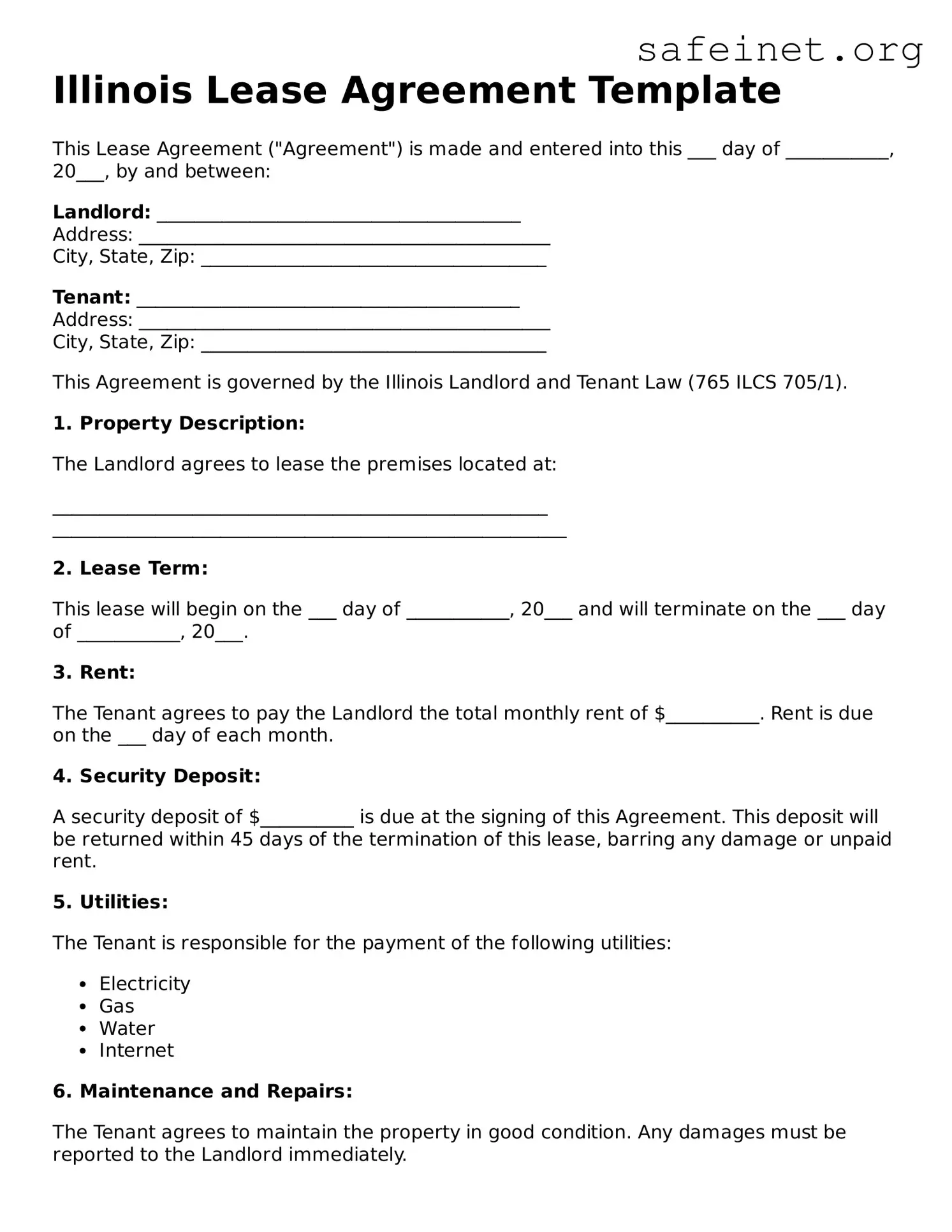Illinois Lease Agreement Template
This Lease Agreement ("Agreement") is made and entered into this ___ day of ___________, 20___, by and between:
Landlord: _______________________________________
Address: ____________________________________________
City, State, Zip: _____________________________________
Tenant: _________________________________________
Address: ____________________________________________
City, State, Zip: _____________________________________
This Agreement is governed by the Illinois Landlord and Tenant Law (765 ILCS 705/1).
1. Property Description:
The Landlord agrees to lease the premises located at:
_____________________________________________________
_______________________________________________________
2. Lease Term:
This lease will begin on the ___ day of ___________, 20___ and will terminate on the ___ day of ___________, 20___.
3. Rent:
The Tenant agrees to pay the Landlord the total monthly rent of $__________. Rent is due on the ___ day of each month.
4. Security Deposit:
A security deposit of $__________ is due at the signing of this Agreement. This deposit will be returned within 45 days of the termination of this lease, barring any damage or unpaid rent.
5. Utilities:
The Tenant is responsible for the payment of the following utilities:
- Electricity
- Gas
- Water
- Internet
6. Maintenance and Repairs:
The Tenant agrees to maintain the property in good condition. Any damages must be reported to the Landlord immediately.
7. Termination:
Either party may terminate this lease by providing a written notice at least ___ days in advance.
8. Governing Law:
This Agreement shall be governed by the laws of the State of Illinois.
IN WITNESS WHEREOF, the parties hereto have executed this lease Agreement as of the date first above written.
Landlord Signature: _____________________________
Date: ________________
Tenant Signature: ______________________________
Date: ________________
